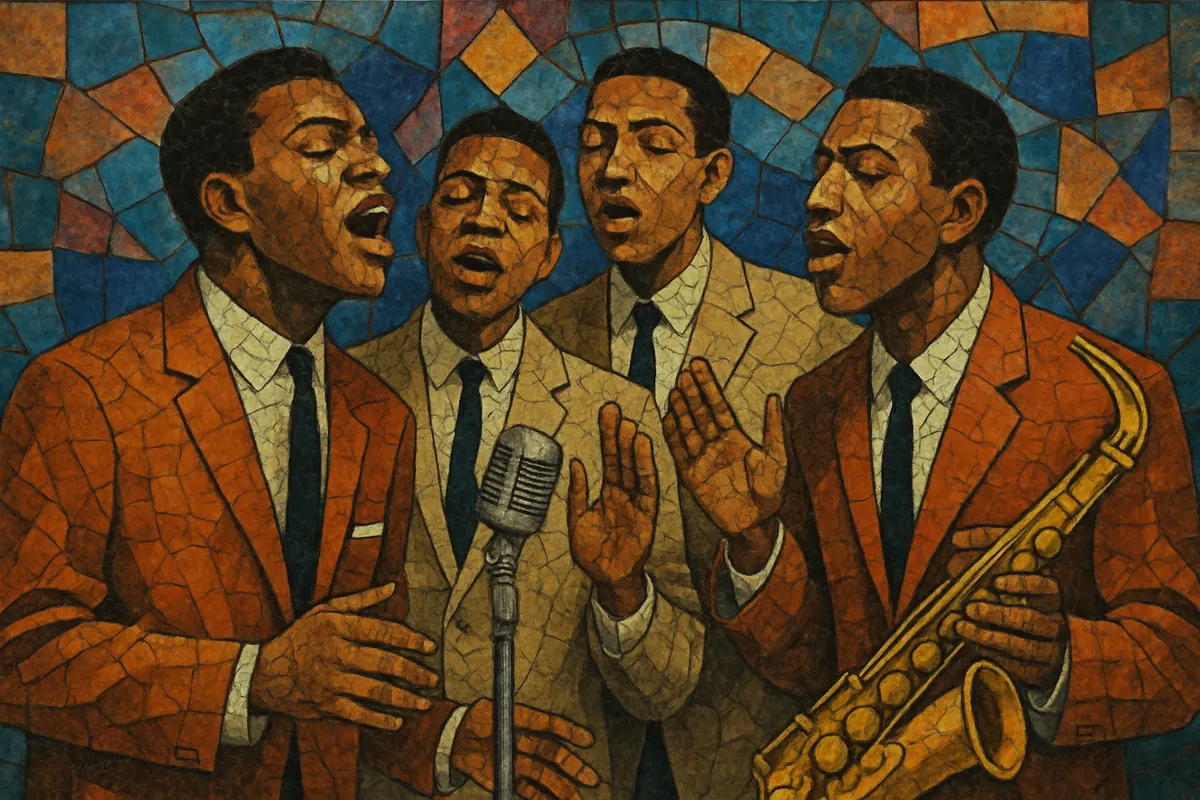Doo-wop is a vocal harmony–driven style of rhythm and blues that blossomed in mid-century urban America. Built around lead-tenor melodies, lush background harmonies, and playful nonsense syllables (the source of its name), the genre blends church-bred gospel techniques with street-corner spontaneity.
Musically, doo-wop favors simple, singable chord cycles—especially the “’50s progression” (I–vi–IV–V)—a steady 4/4 or lilting 12/8 feel, and call-and-response between lead and backing parts. Arrangements range from a cappella to small combos with guitar, piano, bass, light drums, and occasional saxophone. Lyrically, the songs are often teen-centered: romance, longing, heartbreak, and devotion.
The sound emerged in the late 1940s within African-American communities and soon resonated across ethnic lines, inspiring groups in cities such as New York, Philadelphia, Chicago, Detroit, and Los Angeles. Its polished harmonies, sweet ballads, and hooky refrains helped shape early rock and roll and later pop harmony traditions.
Doo-wop took shape in the late 1940s in African-American urban neighborhoods, where vocal groups adapted church-honed gospel harmony and close-harmony techniques to secular themes. Early records by groups like The Ravens and The Orioles (notably “It’s Too Soon to Know,” 1948) established the template: a lead tenor supported by coordinated background parts, with a strong backbeat and romantic lyrics.
The mid-to-late 1950s marked doo-wop’s commercial zenith. Landmark hits—The Penguins’ “Earth Angel,” The Platters’ “Only You” and “The Great Pretender,” The Five Satins’ “In the Still of the Night,” and The Flamingos’ “I Only Have Eyes for You”—brought the style to mainstream audiences. Independent labels (such as Atlantic, Vee-Jay, and Gee) nurtured dozens of groups, and integrated lineups like The Del-Vikings broadened the genre’s reach. Italian-American acts (e.g., Dion and the Belmonts) added their own timbre, while uptempo songs from The Coasters and others bridged doo-wop with rock and roll.
After 1964, the British Invasion and changing pop tastes reduced doo-wop’s chart presence. Yet the sound persisted on oldies radio and in nostalgia circuits. The early 1970s saw a revival—boosted by Sha Na Na, films like American Graffiti (1973), and TV shows such as Happy Days—renewing interest in street-corner harmonies and a cappella performance.
Doo-wop’s DNA runs through early rock and roll, Motown, blue-eyed soul, surf harmonies, and later teen pop. Its hallmark “’50s progression,” falsetto leads, bass-vocal hooks, and call-and-response textures remain foundational tools for vocal groups and harmony-focused pop. Beyond the charts, doo-wop preserved a community tradition of group singing, influencing vocal pedagogy, a cappella ensembles, and global R&B offshoots (including early Jamaican ska and rocksteady).
-
•
Map your chord loop and groove.
•Craft the lead melody, then layer background syllables that support rhythm and harmony.
•Add a bass-vocal line that doubles or answers the bass instrument.
•Refine dynamics—drop instruments for an a cappella bridge, then reintroduce the band for the final refrain.


